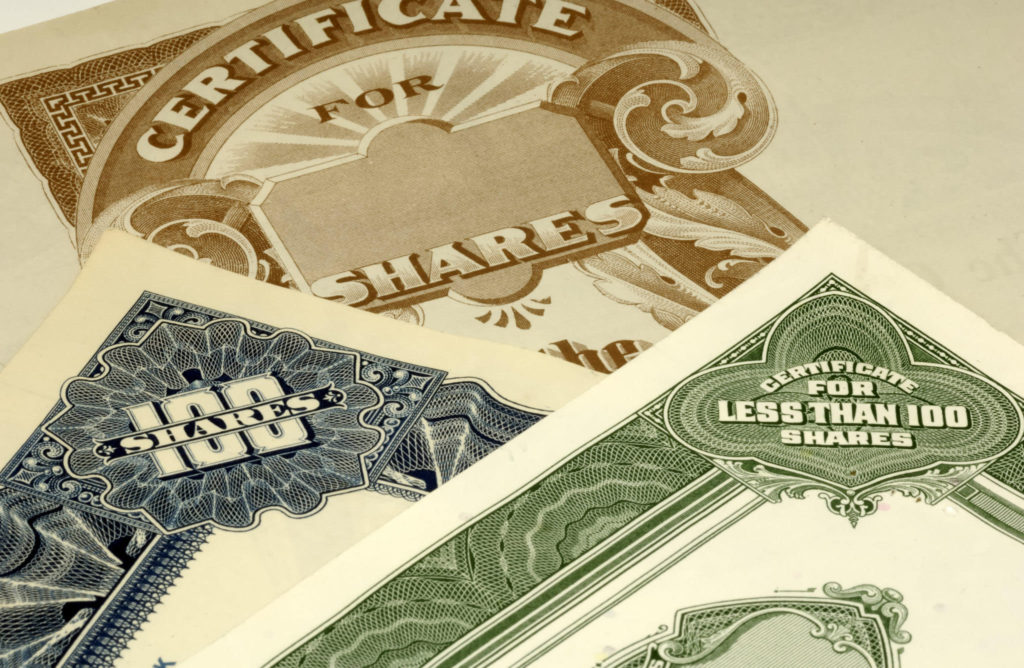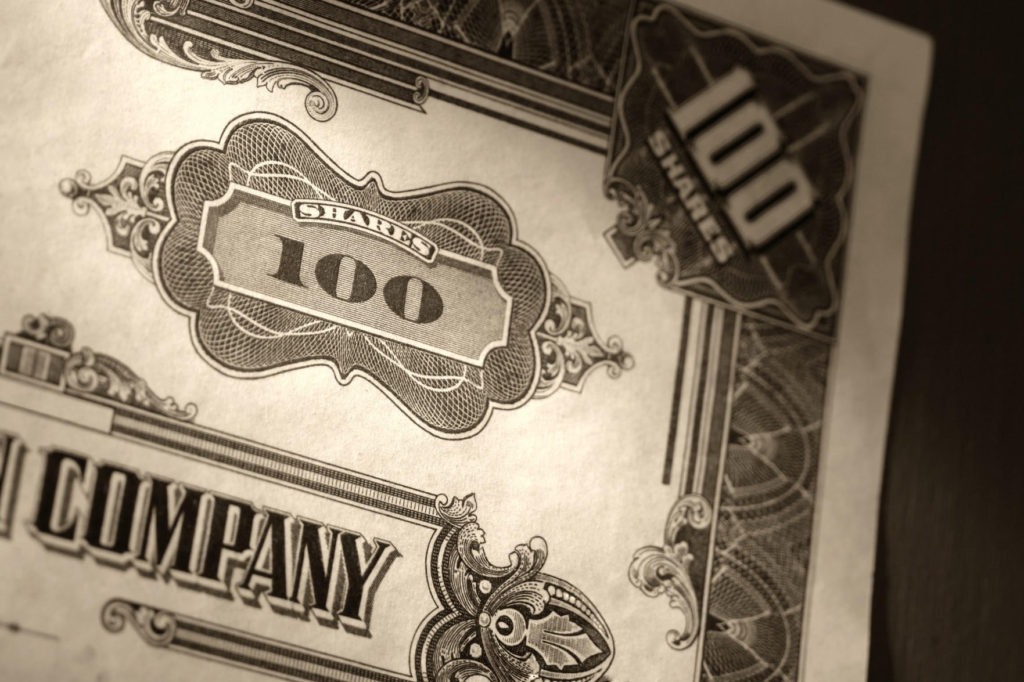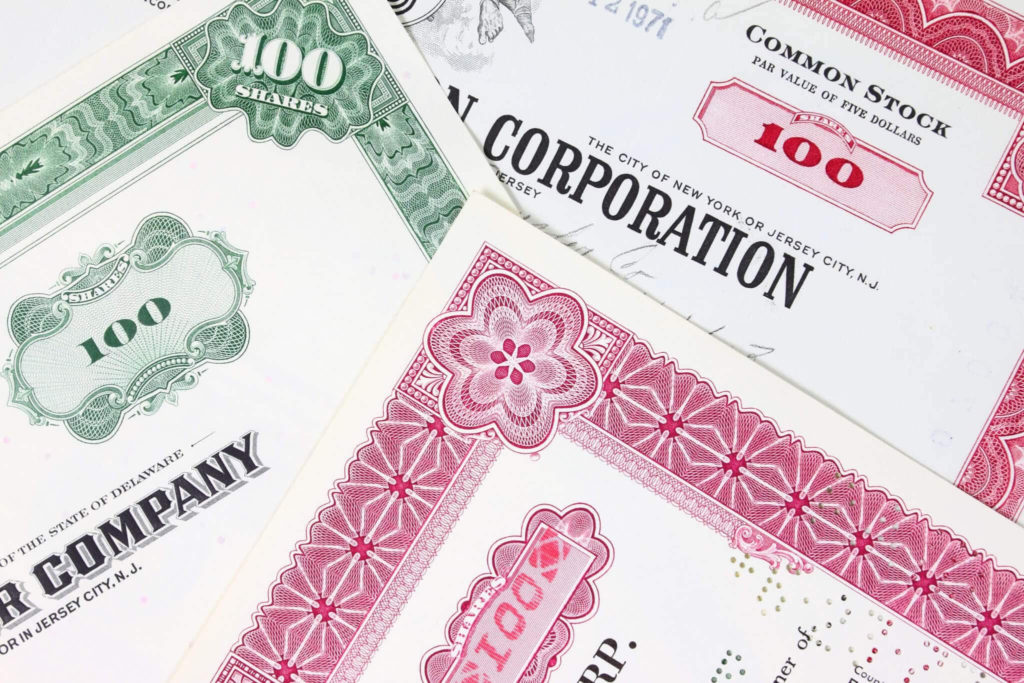
In all my years as an investor, I have bought several different types of stocks. Some I have loved, whilst others, I have hated. If you look on the stock market, every stock you look at will fit into one of these categories!
Naturally, some types of stocks will fit into more than one category… at least if you look at them rather cynically. However, what you’ll find is that most famous investors will stick to only one or two types, rather than buying all of them.
15. Common Stocks
Common stocks are well…. the most common type of stock you could buy. Most people who own stocks, any type of stocks, generally own common stocks. The vast majority of stocks sold on the stock market are common stocks.
A common stock is still ownership in a company, however, it is the lowest type of stock. If the company goes out of business, common stock holders will only be paid after creditors, debt holders and preferred stock holder.
Common stock holders are entitled to a percentage of whatever the company itself makes. Most commonly, this is through the form of regularly paid dividends, although can also include “special” dividends.
On top of this, common stock holders tend to have voting rights, usually one vote per share they own. This enables them to vote on shareholder-specific matters, whilst also voting on who becomes a member of the board.
In general, common stocks tend to outperform most other types of stocks, including most in this article, especially preferred stocks. This is mostly down to the fact that there are more common stocks than preferred stocks.
14. Preferred Stocks
The other main category of stock is preferred stock. Almost all other stocks that aren’t common stocks are preferred stocks, with them once having been quite common although not as much anymore.
In many ways, preferred stocks and common stocks are very similar. Both types of stocks are equity in a given company, although how they show this is extremely different.
For instance, preferred stock holders are entitled to a percentage of the company’s earnings. This is usually done in the form of dividends. On top of this, preferred stock holders are also paid before common stock holders.
However, preferred stock holders have no voting rights. This means that whilst they get paid by the company, they have almost no way of influencing the future of that specific company.
13. Value Stocks
Value stocks are probably the most famous types of stocks in the world. The idea of value stocks originated with Benjamin Graham, in his book The Intelligent Investor, which has since become a cult classic!
Essentially, a value stock is a stock that trades at a price less than it is worth. For the most part, this is simply because the market hasn’t accurately accounted for a certain area of the business or something similar.
And whilst many will call out the death of value investing, as a whole the practice is still thriving. Even today, investors like Warren Buffett buy value stocks that are actually from some of the largest corporations in the US!
As a whole, value stocks underperform in terms of price compared to most other types of stocks. However, that is the entire premise of value stocks. For most successful investors, they have made their money from value stocks.
On top of this, value stocks also get a similar yield to non-value stocks. However, their lower average prices gives them more control over a company (even if only by a couple of shares).
12. Growth Stocks
Growth stocks are equally as famous as value stocks. Unsurprisingly, growth stocks are younger than value stocks, having been “invented” in the 1960’s by William O’Neill.
As the name probably implies, a growth stock is any type of stock that heavily increases in value year-on-year. By most estimates, this a stock that increases in value by 15% or more year-on-year.
For much of the stock market’s history, at the beginning/end of every financial year, there is some form of article published of the biggest growth stocks of the previous/current financial year.
As a result, many companies appear in these articles year-on-year, as many investors continue to buy and sell these stocks, driving up their price.
However, investors tend to sacrifice dividends in favor of growth. And its not that dividends can’t keep up, giving the stocks low yields, but generally, those stocks don’t pay dividends. As such, the investor only makes money when they sell.
11. Dividend Stocks

Recent years have seen dividend stocks enter the mainstream. This is mostly thanks to investing media, who have portrayed them as an income-based alternative to growth and value investing.
As the name implies, dividend stocks are stocks that focus almost entirely on producing an income through dividends. By most counts, the yield must be consistently more than 15% in order to be considered a dividend stock.
With that being said, some people do consider dividend stocks to include any stock that consistently has a yield of more than 5%.
For the most part, dividend stocks sacrifice long term growth in favor of high dividend yields. By their very nature, they are preferred by investors who are seeking a boost in short term income, rather than long term gain.
As with growth stocks at the beginning/end of every financial year, several articles are published talking about the best dividend stocks. As a result, several companies are on these articles for several years running!
10. “Aggressive” Stocks
Sometimes, we want a stock that defies all expectations, in terms of dividend yield, growth, value etc. Naturally, these types of stocks are extremely rare, and have extreme risk.
For the most part, aggressive stocks are smaller scale companies that otherwise have extremely good financials and a history of good earnings. However, the market severely undervalues them for several reasons.
The main reason is perhaps that these stocks push their boundaries regularly. Many of these companies pay large dividends in the hopes of pushing up their own share price.
Whilst this isn’t illegal, nor is it uncommon, the rate that they do it is often concerning. To many, they are only one bad month/quarter away from being completely devastated, and even being forced into bankruptcy.
However, this added risk does also give aggressive stocks incredibly high rewards. Many of my aggressive investor friends make ROIs of between 20-40% per year, at the very least!
9. Defensive Stocks
Sometimes, you aren’t looking to be aggressive, or bring in large amounts of income or grow your portfolio massively. Sometimes, the only types of stocks you want to buy are safe stocks that are guaranteed not to lose you money.
This is where defensive stocks come in. Whilst only a few stocks will be considered “defensive” they generally appreciate in terms of value and provide stable returns regardless of whether its a bull or bear market.
For the most part, defensive stocks are companies that you are going to use regardless, and are therefore untouched by economic recessions. Some of them may even grow exponentially during a recession!
Defensive stocks are generally companies such as your water supplier, as well as your gas and electric suppliers. Supermarkets are similarly considered to be defensive stocks, although they may be hit by the recession.
As a general rule, defensive stocks are better during retirement, especially if you are living off your investment fund.
8. Speculative Stocks
Many speculative stocks are considered to be aggressive stocks, however, not all aggressive stocks are considered to be speculative stocks. For the most part, these companies are companies who have recently had an IPO.
For the most part, these IPOs haven’t gone to plan. Sometimes, a lack of media attention causes many would-be investors to be skeptical of the stock, as such, they don’t invest in them.
This causes their IPO to be flat- their stock price neither increases or decreases. This in turn sees the company have a large potential to grow, as well as generous dividends, but always with some form of “risk”.
Sometimes, it is just that the company has been overlooked by other investors and the media as a whole. Other times, it is that there is a large risk with the company. Hence, they are known as speculative stocks.
7. Cyclical Stocks
As a general rule, most stocks are cyclical stocks. Alongside common stocks, cyclical stocks are the most common types of stocks in the world, with most stocks being common cyclical stocks.
Cyclical stocks don’t have any legal differences to most other types of stocks. Instead, it is mostly to do with the business itself, and how it operates, mostly to do with the industry it is in.
The term cyclical refers to the business cycle- bull and bear markets. During bull markets, the business itself is doing extremely well, and has never been more profitable. However, in bear markets, the company is struggling to survive.
As such, during bull markets, the returns on these companies are massive. However, in bear markets, these companies often cut dividends and lay off many of its staff, just in order to keep the lights on.
The airline industry is perhaps the best example of this, as are clothing stores, car manufacturers and hotels among others. There is also the added risk that the business will go under during the recession.
6. Blue-Chip Stocks

For most novice investors, or when you use a financial planner of some kind, they tend to buy the safest types of stocks. In this case, blue-chip stocks are probably the “safest” (although they are not risk-free).
Blue-chip stocks include a vast array of stocks, but are mainly well established companies with long histories of turning a profit. Think of companies like IBM, Johnson & Johnson and Berkshire Hathaway etc.
On top of this, these companies generally have a long history of being profitable regardless of the current economic climate. If business is booming, so are they, if it isn’t, they’re still booming.
As if the deal wasn’t sweet enough, these companies also have a long history of paying really well. Usually, these companies have a dividend yield of between 1.5% and 4% depending on the company.
5. Tech Stocks
In recent years, tech stocks have become incredibly popular, especially with the creation, and popularization of FAANG (otherwise known as the “Big Four Tech Companies”).
As I’m sure you’ve guessed, tech stocks deal in the insurance industry. Just kidding, they are obviously involved in the tech industry. For the most part, they invent new technology, although sometimes, use technology to revive an old industry.
For the most part, tech stocks are considered to be safe buys. Very rarely does the price of the company decrease exponentially with them often having strong P/E (Price/Earnings) ratios.
However, several tech stocks do not pay dividends as a result of this. For many of these companies, it is only meant to be temporary, whilst for others, it is a device to help increase the stock’s price.
Despite this, a few tech stocks are also considered to be blue-chip stocks, especially long-standing companies like IBM (I am in no way saying that they are a good company to invest in, after all, Warren Buffett did divest himself recently).
4. “Special” Stocks
So-called “special” stocks are some of the rarest types of stocks on the planet. For the most part, “special” stocks appear as any other ordinary stock, however, for the most part, do not act like one.
For starters, most publicly traded companies don’t have “special” stocks. Instead, these are mostly reserved for privately-held companies.
There are only two major public companies that have “special” stocks. These are BAE Systems and Rolls-Royce, who both have one “golden” share owned by the UK government.
For the most part, these stocks will pay dividends, with the dividend itself often being determined on a case by case basis. Due to this, some are quite high, whilst others are dismally low.
Due to legal restrictions, most “special” stocks cannot be sold, although they can be given as a gift or inherited. For the most part, they are used by family businesses to keep the family in charge.
To that end, these stocks usually allow their holder to vote. Depending on the company, this can be a veto vote, or a vote that counts as several votes, or simply a vote that counts as one.
3. Penny Stocks
In recent years, penny stocks have become quite famous, or rather, quite infamous for their controversies. Recent years have seen a number of high profile scams involve penny stocks, losing people hundreds of thousands of dollars.
Despite this, if done correctly, penny stocks can make their owners extremely wealthy in only a few short years!
Essentially, a penny stock is any stock that trades under $5, and has done so for several years. Previously, it was defined as any stock trading under $1, however, due to inflation, this number has been raised.
For the most part, these penny stocks are smaller multinational companies that are looking to raise finance. Due to their comparatively low earnings, they are given a very low price.
In spite of their low price, many penny stocks do pay relatively generous dividends. Although, many more will not.
It is primarily for this reason why so many people have been scammed into buying dud penny stocks, loosing them a lot of their money.
2. New Issue Stocks
After a company has an IPO, they issue new shares to the investors who buy them. Unlike other stocks, these are short lived as they soon transition into another type of stock upon being received by the investor.
If you had invested in the company prior to its IPO, your stocks in the company are also considered new issue stocks until after the IPO. Following this, they can be traded as any other stock.
As new issue stocks, they possess several traits that make them rather different from most other types of stocks.
For instance, the price of new issue stocks is initially fixed at whatever the company’s IPO price is. This price cannot be altered until the stock has become possession of the first owner, where it is worth the current market price.
With only a few exceptions, most new issues don’t pay regular dividends either. If the company decides to pay dividends, this is decided later by shareholders, and subsequently introduced.
1. International Stocks

In reality, international stocks aren’t a different type of stock. It’s more that investors in the US prefer to invest in their own country, rather than in foreign companies.
As the name probably implies, an international stock is any type of stock that is issued by a company not based in the US. For example, Mitsubishi, the Japanese coonglomerate, is considered an international stock.
Due to the fact that any non-US issued stock is considered an international stock, there is generally no indication as to how good the stocks are as a whole- some are great, whilst others are terrible.
For the most part, these companies trade at a lower price than their American counterparts, and have much higher yields. However, legalities, transport and communication are always issues as well.
Which are your go-to types of stocks? Tell me in the comments!


